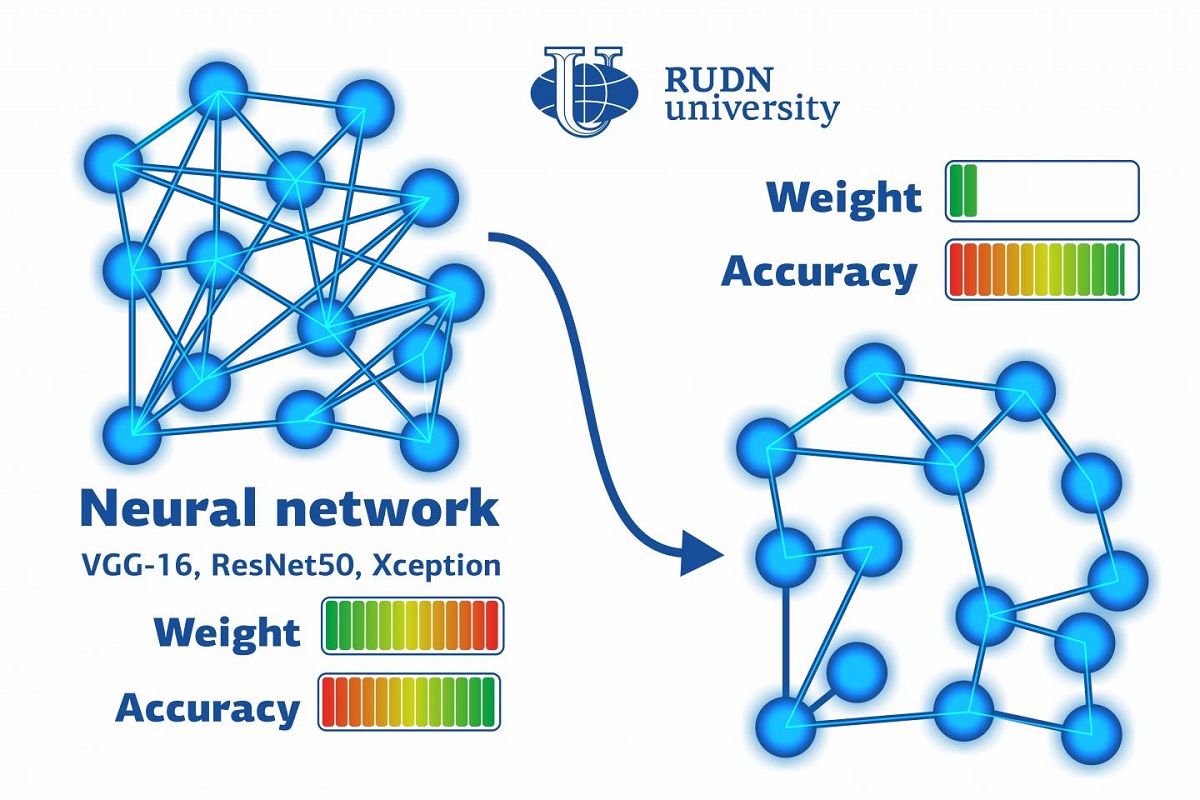RUDN University mathematicians reduced neural network size six times without post-training
The structures of artificial neural networks and neurons in a living organism are based on the same principles. Nodes in a network are interconnected; some of them receive a signal, and some transmit it by activating or suppressing the next element in the chain. The processing of any signal (for example, an image or a sound) requires a lot of network elements and connections coming from them. However, computer models have limited capacity and storage volume. To work with large data volumes, specialists have to invent different ways to lower capacity requirements, including the so-called quantization. It helps reduce the consumption of resources but requires system re-training. A team of mathematicians from RUDN University found out that the latter step could be avoided.
“Several years ago we carried out efficient and cost-effective quantization of weights in a Hopfield network. It is an associative memory network with symmetrical connections between elements that are formed following Hebb’s rule. In the course of its operation, the activity of the network is reduced to a certain equilibrium state, and when it is reached, a task is considered solved. The insights obtained in that study were later applied to feedforward deep learning networks that are very popular in image recognition today. As a rule, these networks require re-training after quantization, but we found a way to avoid it,” said Iakov Karandashev, PhD, an Assistant Professor at the Nikolskii Mathematical Institute, RUDN University.
The main idea behind the simplification of artificial neural networks is the so-called quantization of weights, i.e. reducing the number of bits per each weight. Quantization provides for the averaging of signal: for example, if it is applied to an image, all pixels representing different shades of the same color will become identical. Mathematically, it means that neural connections that are similar by certain parameters should have the same weight (or importance) expressed as a number.
A team of mathematicians from RUDN University carried out calculations and created formulae that effectively establish correlations between the weights in a neural network before and after quantization. Based on them, the scientists developed algorithms using which a trained neural network could classify images. In their experiment, the mathematicians used a text package of 50 thousand photos that could be divided into 1,000 groups. After training, the network was quantized using the new method and not re-trained. Then, the results were compared to other quantization algorithms.
“After quantization, the classification accuracy decreased by only 1%, but the required storage volume was reduced six times. Experiments show that our network doesn’t need re-training due to a strong correlation between initial and quantized weights. This approach could help save resources when completing time-sensitive tasks or working on mobile devices,” added Iakov Karandashev from RUDN University.
The results of the work were published in the Optical Memory and Neural Networks journal
Sergey Ivanov, a scholar from St. Petersburg, has been named the first winner of RUDN University’s International Prize for Scientific Achievements in Mathematics, worth 5 million rubles.
Products derived from microalgae represent a cutting-edge development in the field of bioeconomy. The potential of this biological resource was discussed at the international research seminar “Foundations for a Green Sustainable Energy”, part of the BRICS Network University’s thematic group on “Energy”. The event was organized by the Institute of Ecology at RUDN University.
Ambassadors of Russian education and science met at a conference in RUDN University to discuss how they can increase the visibility of Russian universities and research organizations in the world, and attract more international students in Russia.
